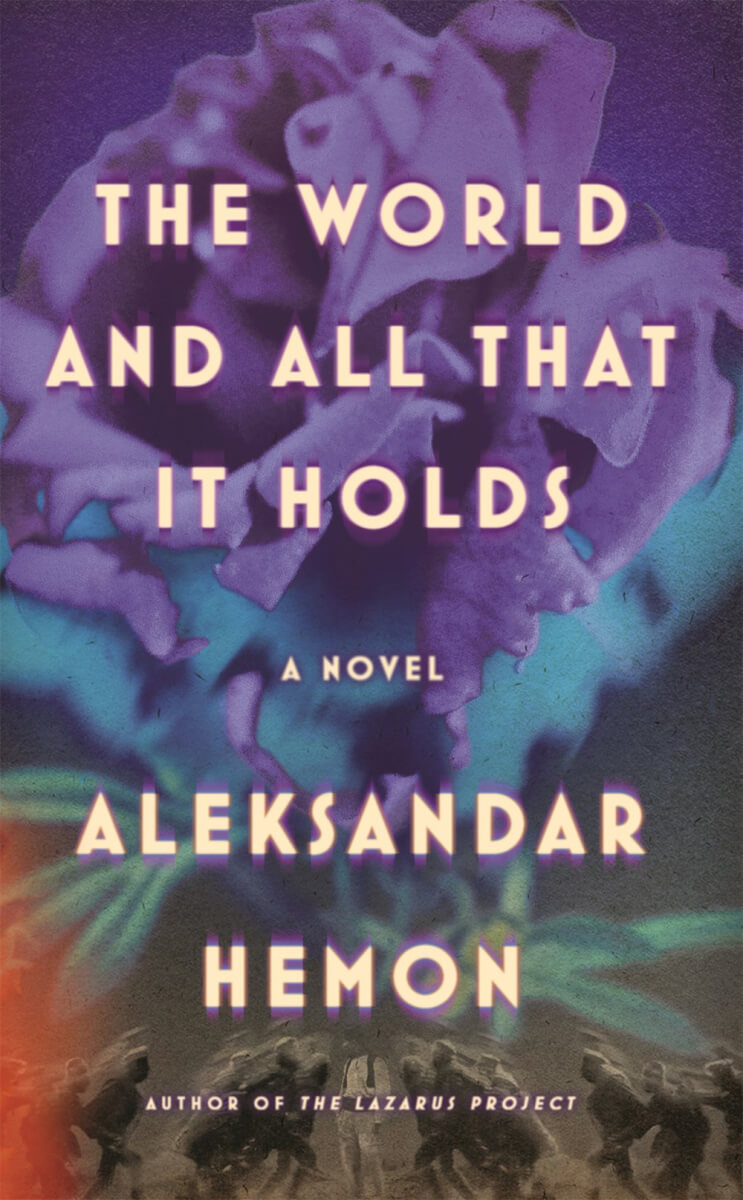Aleksandar Hemon’s literary career has been nothing if not diverse, with works that range from the comic novel The Making of Zombie Wars to his acclaimed The Lazarus Project, from collections of essays and stories to his collaboration with Lana Wachowski and David Mitchell on the script for The Matrix Resurrections. The World and All That It Holds launches him yet again into new territory, as his ambitious, elegantly wrought novel melds two love stories that play out amid the devastating global conflicts of the first half of the 20th century.
Rafael Pinto, a poetry-writing Bosnian Jew with a weakness for opiates, witnesses the assassination of Archduke Franz Ferdinand and his wife just outside his Sarajevo apothecary shop in August 1914. Shortly afterward, Rafael finds himself conscripted into the army of the Austro-Hungarian Empire and fighting in the bloody trenches of World War I, where “nothing happened all the time, and also very slowly.” Rafael falls in love with Osman, another Sarajevan member of his unit, a Muslim man and gifted storyteller with “a knack for fixing problems.”
Rafael’s entanglement in the brutal, pointless conflict is only the beginning of an odyssey that takes him from Europe’s battlefields to the Asian wilderness and on foot across the Chinese desert, then to Shanghai where he experiences life as a refugee in the period that extends from a few years preceding the Japanese invasion of 1937 to the Communist takeover in 1949. For most of that journey, he’s accompanied by Osman’s daughter, Rahela, after Osman disappears. But even after Osman’s physical presence is gone, his bond with Rafael is the source of a sustaining power within this harsh new life, one that slowly deepens Rafael’s affection for Rahela.
The World and All That It Holds mostly follows the perspectives of Rafael and Rahela, with occasional detours into the memoirs of colorful British spy Edgar Moser-Ethering, who becomes a ubiquitous presence in Rafael’s life.

Hemon’s ability to pack such an epic narrative into 352 pages is impressive. Across all its settings, the tale is enriched by the accumulation of closely observed details. Vivid action sequences are neatly balanced with scenes exploring the characters’ interior lives. Although the story is not overtly religious, Hemon alludes frequently to the biblical account of the Tower of Babel and God’s decision to “confound their speech, so that nobody shall understand,” as well as the Samsara wheel, the symbol of reincarnation in Buddhism and Hinduism. “Just love each other whatever the world you think you might be in,” a character tells Rafael and Osman. The power of love to give meaning to life, even in the worst of circumstances, suffuses this quietly passionate story.





